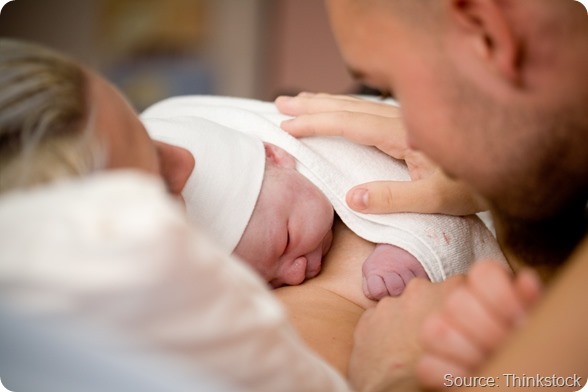A recent study has shown that a newborn benefits from delayed cord clamping even when placed immediately on the mother's abdomen.

Delaying clamping of the umbilical cord until around two minutes after birth allows additional blood to pass from the mother to the baby, and has been shown to reduce the risk of iron deficiency in infancy.
However, current recommendations suggest that the baby needs to be held at the level of the placenta (introitus position) for this to be effective.
Holding the baby in this position for two minutes is uncomfortable and prevents immediate contact between mother and baby. This may contribute to the low compliance with delayed clamping in hospitals, ultimately increasing the incidence of iron deficiency in babies and children.
A recent study in Argentina tested whether the transfer of blood during delayed cord clamping is affected by the position in which the baby is held.
Delayed cord clamping of 391 babies was monitored with 197 babies held in the introitus position and 194 babies placed on the mother’s abdomen or chest immediately after birth.
The weight of the newborn was measured at the point of birth and again immediately after delayed cord clamping in order to determine the volume of blood that had transferred from the placenta to the baby.
There was no statistically significant difference between the two groups in the volume of blood transferred, indicating that placing the baby on the mother’s abdomen or chest is no less effective than the more awkward introitus position during delayed cord clamping.
Professor Nestor Vain remarked “Because of the potential of enhanced bonding between mother and baby, increased success of breastfeeding and the compliance with the procedure, holding the infant by the mother immediately after birth should be strongly recommended.”
Dr Tonse Raju commented “Introduction of delayed cord clamping into practice has been sporadic, with logistical issues being one possible reason.”
The results showed that gravity did not affect the volume of placental blood transfusion. Encouraging placing the baby on the mother's abdomen before the umbilical cord is clamped could improve uptake of delayed cord clamping and reduce the risk of iron deficiency in infancy.
Source:
Vain NE, et al. Effect of gravity on volume of placental transfusion: a multicentre, randomised, non-inferiority trial. Lancet April 2014. Available at http://www.thelancet.com/journals/lancet/article/PIIS0140-6736%2814%2960197-5/abstract